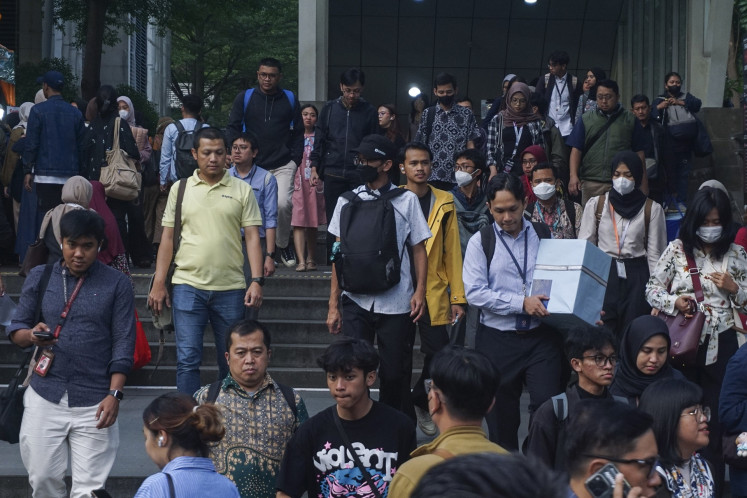Popular Reads
Top Results
Can't find what you're looking for?
View all search resultsPopular Reads
Top Results
Can't find what you're looking for?
View all search resultsGeothermal energy still attractive to investors
Geothermal energy has been a hot issue in the country, particularly in the past few months, as the government is working to increase the share of renewable energy in the country’s power generation
Change text size
Gift Premium Articles
to Anyone
G
eothermal energy has been a hot issue in the country, particularly in the past few months, as the government is working to increase the share of renewable energy in the country’s power generation.
The government’s efforts got a boost on Wednesday when Japan’s Inpex kicked off the operation of its third geothermal power plant in North Tapanuli regency, North Sumatra.
Dubbed the world’s largest single-contract geothermal project, the Sarulla power plant has a total capacity of 330 megawatts (MW), along with the first and second units, which have been in operation since March and October 2017, respectively.
That capacity is reportedly equivalent to the power consumption of 2.1 million households in Indonesia.
The news came amid the Energy and Mineral Resources Ministry’s success in attaining 93.5 percent of its total target of 2,058 MW in renewable power plants in 2018. “At this point [1,924 MW as of April], we have passed the Philippines to become the second-biggest geothermal-producing country in the world [after the United States],” the ministry’s energy conservation and renewable energy director general, Rida Mulyana, said recently.
Regarding non-tax revenue from the sector, it has reached 31.4 percent from the target in 2018 at Rp 700 billion (US$49 million). Yet it is a lower target than last year’s achievement, which stood at Rp 933 billion. “It [the lower target] was due to fewer drilling projects this year,” Rida explained.
Intensifying geothermal contribution is one of the efforts from the government to reach a long-term goal of increasing the renewables share in the national energy mix to 23 percent by 2025.
“The Sarulla power plant is a booster to our industry [geothermal], especially on Sumatra Island, where the electrification is not yet sufficient,” the ministry’s director for geothermal, Ida Nuryatin, told The Jakarta Post on Wednesday.
Ida added that with the commencement of the Sarulla power plant, it also shows the sector is still enticing investors, “because they [Sarulla] have a competitive selling price to [state-electricity firm] PLN”, she said.
Previously, Inpex stated in its press statement that the power generated from all of the units in Sarulla is scheduled to be sold to PLN for a 30-year period.
Besides the Sarulla power plant, Ida said, there is another project that is set to commence operation before the end of 2018, which is the 240 MW Sorik Marapi plant in Mandailing Natal, North Sumatra.
The Indonesian Geothermal Association (API) likewise said the current environment in the geothermal sector was attractive enough for investors. However, API chairman Prijandaru Effendi urged the government to speed up the derivative rules of Ministerial Regulation No. 50/2017 on renewable energy.
“We have yet to see the further rule for investment of renewable energy plants in Java, Sumatra and Bali, which the parent regulation [No. 50/2017] stipulates that the buying price can be negotiated,” he said.
Java, Sumatra and Bali are three provinces that have lots of interest from the investors as the regions have adequate facilities. Therefore, Prijandaru suggested that the regions be prioritized for private companies.
“We as private players need margin for our profit, so we will likely to set our eyes on high-demand provinces,” he said, “while outer regions, for instance eastern provinces, have to become the focus of government as it will be in line with the social welfare purpose”.
The government has set a target to boost the electrification ratio to 99 percent by 2019, which for this year is 97.5 percent. It further expected to complete the project to electrify 167,064 households in 2018 with solar-powered energy-saving lamps from PLN.










